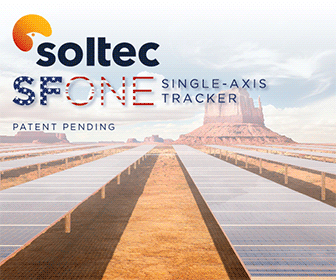U.S. General Services Administration Selects Solaria as Provider for Green Proving Ground Program, Reducing Risk, Accelerating Market Adoption
Solaria Corporation, global provider of solar module technologies, announced that it has been selected as a participant in the United States General Services Administration (GSA) Green Proving Ground (GPG) program. The GPG leverages GSA’s real estate portfolio to evaluate innovative sustainable building technologies. The GPG program selected Solaria after extensive testing of its building integrated photovoltaic (BIPV) solutions, funded by the Department of Energy (DOE), at Lawrence Berkeley National Laboratory’s (LBNL) new FLEXLAB. Solaria’s BIPV system underwent holistic testing, at the world’s most advanced building efficiency test bed, for energy generation, glass performance and tenant comfort, as well as proving a smooth and cost effective design-build process. As a result, the GSA is moving forward with a commercial pilot installation of the technology in 2016, to further to the readiness for commercial scale deployments across its portfolio.
A Federal Building in Kansas City, Missouri, was chosen for the commercial pilot. While demonstrating its BIPV technology in an occupied building, the Solaria and the GSA, with LBNL, will collect energy generation, thermal performance, daylighting, glare and occupant comfort data in comparison with non-BIPV windows in the same building. In addition to the factors above, it includes evaluation of the design-build process and economics. On the heels of the successful testing at FLEXLAB, it is anticipated that the results will show that BIPV solutions offer the building and construction industries a reliable, seamless alternative to traditional glass solutions with a product that provides additional value in moving glazed facades towards the goal of positive net energy gains.
“The Green Proving Ground program is committed to driving innovation that improves building performance,” said Kevin Powell, GPG program manager at GSA. “We hope that real-world evaluations like this one will accelerate adoption of sustainable building technologies around the nation.”
“At LBNL we are excited when we find technologies that can help us advance façade performance toward our goals of net zero energy buildings. We believe that the path to zero starts by eliminating energy waste, then increasing the intelligence of buildings through smart, responsive, people-friendly operating controls and finally introducing renewables for micro generation,” said Stephen Selkowitz, Senior Advisor for Building Science, Lawrence Berkeley National Laboratory. “Through our testing in this project, we found that Solaria’s BIPV solution adds to our prior GSA-GPG studies of dimmable lighting and dynamic glazing so that we now address all three challenges on this path.”
With the critical need for action in the built environment gaining momentum with COP21 commitments SB350 and the recently extended tax package for green building, real estate owners now have a viable option to take advantage of vast building facades to generate energy and cost savings. Solaria’s BIPV windows, now commercially available, offer an aesthetically pleasing, energy generating, and economically compelling solution.
“We have a deep respect for the rigorous certification process that the GSA conducts to select its certified providers and Solaria is honored to have been selected as a provider of BIPV for GSA’s GPG program and after the meticulous validation process that was conducted by FLEXLAB,” said Udi Paret, GM Building Solutions, Solaria Corporation. “We commend the GSA GPG program and its mission to provide its extensive building portfolio with access to the latest building technologies for green building and renewable energy.”
Solaria Corporation









.jpg?r=2891)

.jpg?r=5203)
.gif?r=1048)